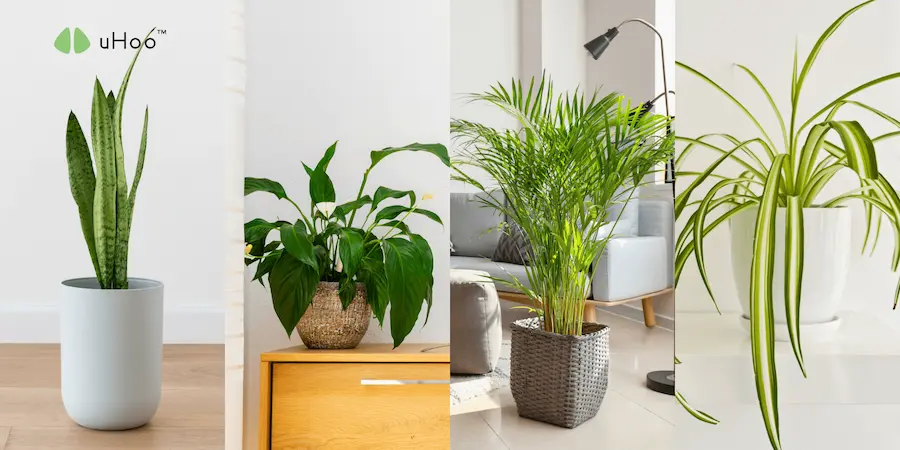The air we breathe indoors can often be just as impactful on our health as the air outside. From vehicle emissions that seep in, to gases released by new furniture, cleaning products, and even cooking, our homes can unknowingly harbor a cocktail of pollutants.
While aesthetically pleasing, certain houseplants offer a remarkable bonus: they are living air purifiers, silently working to cleanse your indoor environment. Ready to invite nature’s engineers into your home? Here are 4 select houseplants renowned for their air-purifying prowess, perfectly suited to thrive in the Philippine climate:
1. Snake Plant (Sansevieria trifasciata) – The Resilient Night Worker
Often called “Mother-in-Law’s Tongue,” this striking plant is a powerhouse of purification, especially unique for its ability to convert carbon dioxide to oxygen at night. This makes it an ideal bedroom companion. It’s incredibly resilient and low-maintenance, perfect for even the most forgetful plant parent.
- Air-Purifying Superpower: Highly effective at removing a range of common VOCs, including formaldehyde (found in building materials, glues, and some fabrics), benzene (in plastics, dyes, detergents, cigarette smoke), trichloroethylene (in cleaning fluids, varnishes), and xylene (in rust removers, paint thinners).
- How it Works: Its sturdy, upright leaves absorb toxins through tiny pores (stomata) and convert them into plant food, while simultaneously releasing oxygen.
2. Peace Lily (Spathiphyllum) – The Elegant Toxins Fighter
With its elegant white “flowers” (actually modified leaves called spathes) and lush green foliage, the Peace Lily is a popular choice for its beauty, but its air-purifying capabilities are equally impressive. It’s a fantastic all-rounder for improving indoor air quality.
- Air-Purifying Superpower: A true champion against ammonia (in cleaning products), benzene, formaldehyde, and trichloroethylene. It’s also known to reduce mold spores, a significant advantage in an often humid environment, by absorbing them through its leaves. Learn more about mold through the uHoo Mold Index.
- How it Works: The large leaf surface area effectively absorbs airborne toxins, which are then transported to the roots and broken down by microorganisms in the soil. It also humidifies the air, which can be beneficial for respiratory comfort.
3. Areca Palm (Dypsis lutescens) – The Humidifier & Filter Combo
This majestic palm brings a touch of tropical paradise indoors while simultaneously acting as one of the most effective natural air-humidifying houseplants. It’s excellent for larger spaces and can significantly improve the overall air quality.
- Air-Purifying Superpower: Outstanding at removing formaldehyde, xylene, and toluene (found in paints, glues, gasoline, and some air fresheners). Its high transpiration rate (releasing water vapor) makes it a natural humidifier, which can help alleviate dry air issues often caused by air conditioning.
- How it Works: Its numerous fronds provide ample surface area for absorbing airborne pollutants and releasing beneficial moisture into the air.
4. Spider Plant (Chlorophytum comosum) – The Easy-Care Workhorse
A classic for a reason, the Spider Plant is not only incredibly easy to grow and propagate (those little “spiderettes” are charming!), but it’s also a highly efficient air purifier, perfect for beginners and seasoned enthusiasts of houseplants alike.
- Air-Purifying Superpower: Particularly effective at combating formaldehyde, xylene, and even traces of carbon monoxide (though never rely solely on plants for CO detection). It’s a forgiving plant that consistently works to clean your air.
- How it Works: Its long, arching leaves absorb harmful gases, which are then metabolized by the plant.
Cultivating Air-Purifying Houseplants
To maximize the benefits of these houseplants, remember:
- Quantity Matters: While one plant helps, several houseplants (a general recommendation is 1-2 plants per 100 square feet) will have a more noticeable impact on your indoor air quality.
- Keep Them Healthy: Healthy plants are better purifiers. Follow their specific light and watering needs.
- Wipe Leaves: Periodically wipe dust off the leaves with a damp cloth; dust can clog the pores and reduce their purifying efficiency.
By strategically placing these beautiful and beneficial houseplants throughout your home, you’re not just adding greenery. You’re creating a living, breathing air purification system. For a comprehensive understanding of your home’s air quality, a uHoo air quality monitor can help alongside them by providing real-time data on various pollutants, allowing you to fine-tune your efforts for a truly healthier home.



